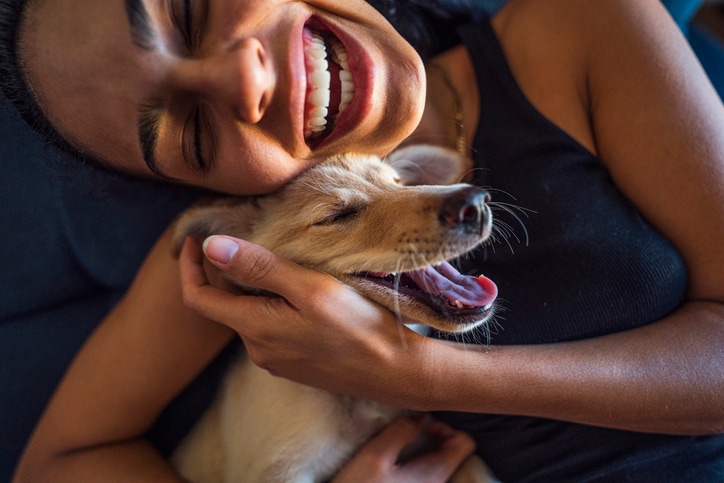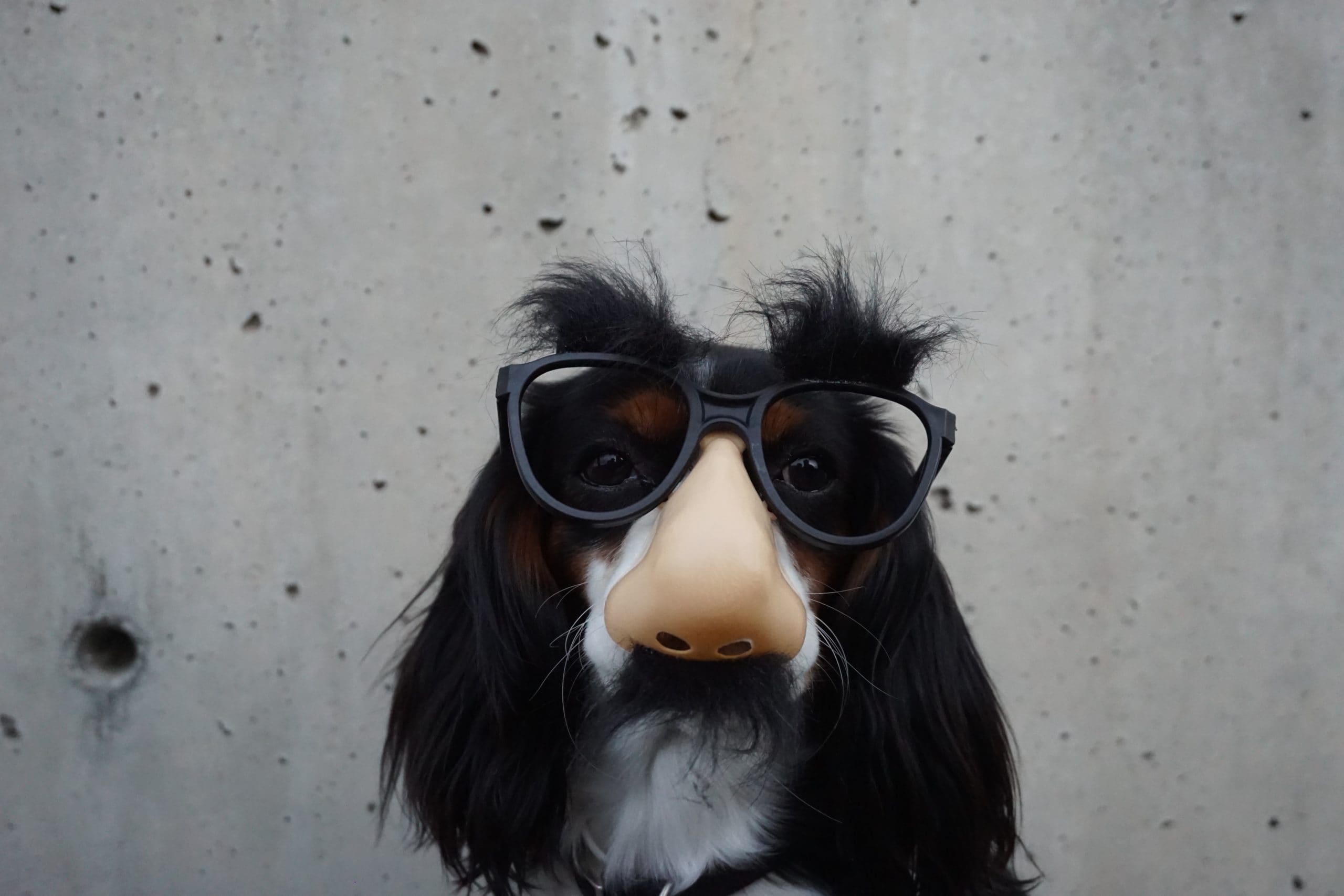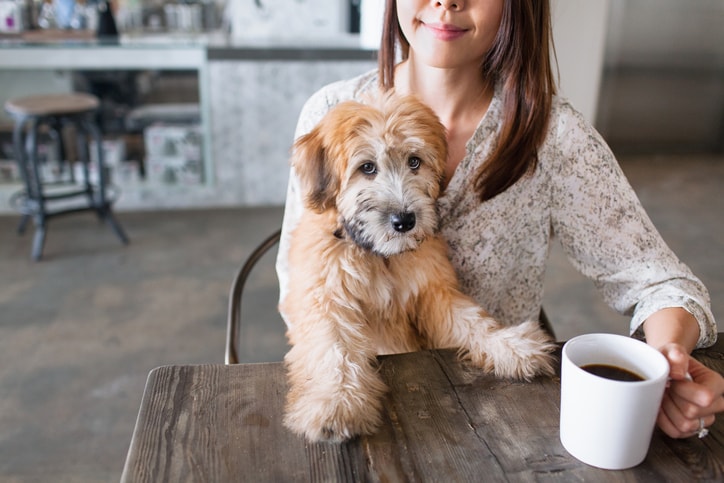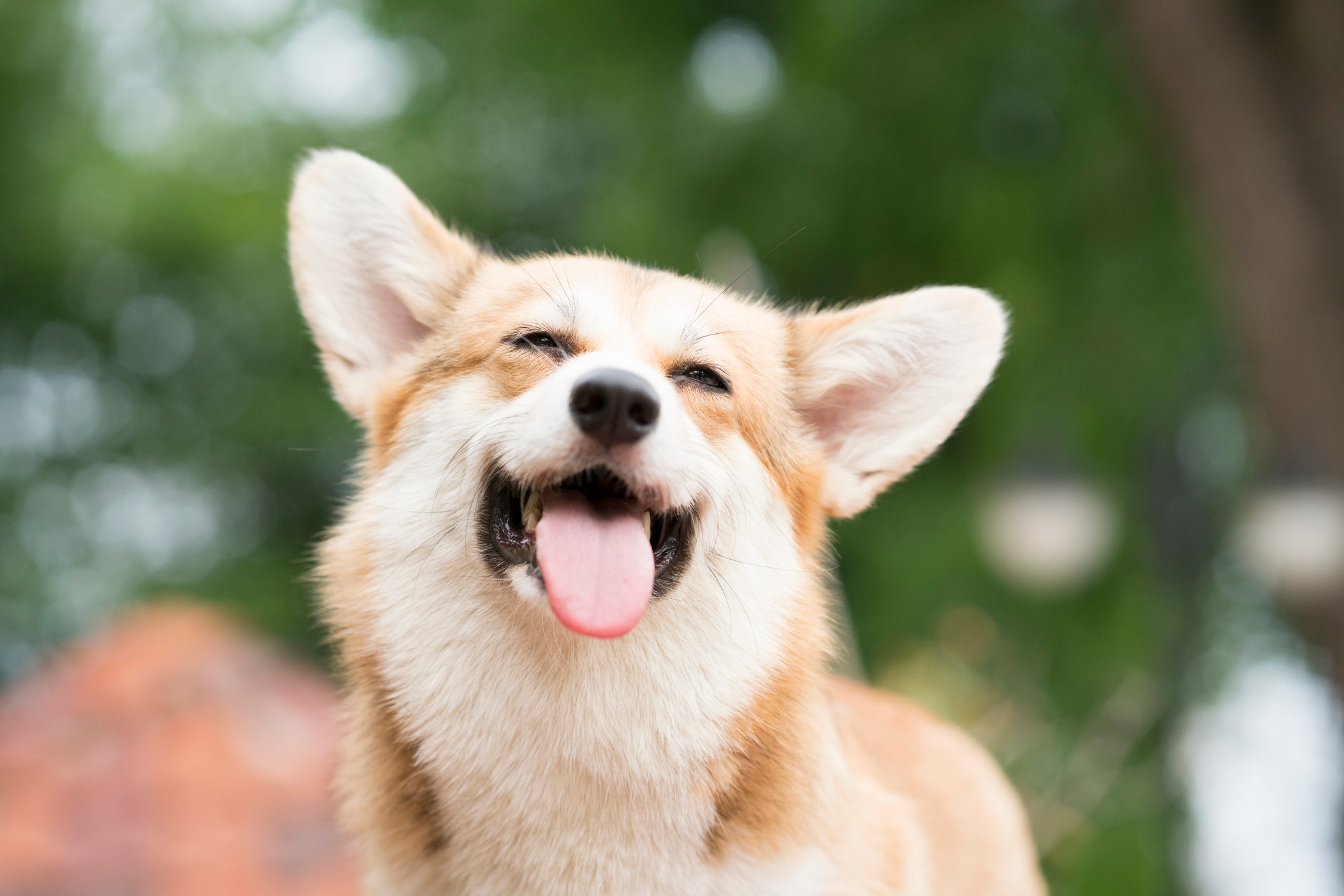In this article
Ask any dog owner if their canine companion has a favorite human, and you’re pretty much guaranteed one of two answers: an emphatic, “Me, of course!” or “I’d rather not talk about it.” From giving selective snuggles to following one person around the house, dog owners often witness a mix of behaviors that can make it seem like their pet is playing favorites. But are they?
“Dogs are very much like people,” says Pam Nichols, a doctor of veterinary medicine and owner of Animal Care Daybreak, an American Animal Hospital Association (AAHA) accredited animal hospital in Utah. “They do have favorites, and they absolutely have [people] preferences depending on lots of factors.”
Ever wonder, “does my dog love me?” (Spoiler alert: He does!) But here’s how to tell if you’re your dog’s favorite human, along with expert tips for developing a healthy bond with your pet.
Key takeaways
- Dogs often have a favorite person, usually the one who trains, plays with or cares for them most.
- This bond depends on the dog’s personality and routine.
- Still, dogs can love multiple people and shift favorites over time.
Is there such a thing as being your dog’s favorite human?
It’s true that some dogs tend to gravitate towards one owner or person in the home more than others, according to professional dog trainer and behaviorist Sally Grottini with JustAnswer who has over 30 years of experience working with canines. But it’s important to understand that the strong bonds canines form with a certain human can occur for a number of reasons.
“Dogs are instinctual which means hierarchy is important to them,” Grottini says. “The person who trains them positively will often get the most attention from the dog.” This is because proper training builds not only a strong bond between them, but respect for the human, she explains.
But dog owners should be careful not to confuse all extra attention they may get from their pup as positive. Overly excited greetings for a particular person’s arrival or departure can be a sign of separation anxiety, not favoritism, Nichols notes. Similarly, possessive behavior from your dog does not indicate a healthy bond. For example, if a dog does not let others near a certain person, this could be a sign that the dog is “taking possession” of the human as if it were food or a toy, according to Grottini. “This should not be confused with being a favorite or being protective,” she says. “If a dog is of good temperament, it will show more love to one person, but it will not show any aggression to the others in the home.”
“A healthy dog is calm and even tempered,” Nichols adds. “They are happy with whichever person is in the room, and a healthy dog can have its favorite person leave and not panic.”
“A healthy dog is calm and even tempered. They are happy with whichever person is in the room, and a healthy dog can have its favorite person leave and not panic.”
— Pam Nichols, a doctor of veterinary medicine
How dogs choose their favorite person
Similar to humans, dogs have different personalities, or temperaments that can vary from shy to dominant, Grottini explains. For canines, these temperaments stay the same from birth, and they can play a big part in who a dog naturally chooses as a favorite.
With this in mind, here are a few ways dogs choose a favorite human based on their personality:
Who gives the best treats and rewards?
“In cases where the dog has a happy-go-lucky temperament, where it loves every person they see, then it is likely they will love everyone in the home equally,” Grottini says. “But the person that positively trained the dog will get the most respect and likely be seen as a favorite.”
This is because the best dog training is all about positive reinforcement, whether that be praise, food or play. “Training a dog does not mean one has to be strict and demeaning,” Grottini says. “It should be positive and always rewarding, and that is how the dog will see you when you are with it.”
Who is most consistent?
If a dog has a fearful or anxious temperament, they are going to become closer to who they see as being most consistent in the home, Grottini explains. “Consistency is shown usually by the owner that is with the dog most of the day,” she says. “The dog learns their owners’ movements and routine and begins to show trust. This enables a fearful dog to know what to expect from that person.”
As a trainer, she’s witnessed times when that consistent person might go away for a week or two and an anxious dog will get closer to the next most consistent person in the home. But this will usually only last until the original person comes back.
Who is the most fun?
“There is often a routine between the family for playtime and what one expects in other areas such as dinner time, relaxing time, etc.” Grottini says. “The one that shows the fun times may be seen as the favorite.”
With this in mind, if your dog has a favorite activity, such as chasing a ball or playing tug-of-war, and one person in the home does that with the dog all the time, the dog will likely look forward to having that person come home at the end of the day more than others.
Am I my dog’s favorite person?
“A dog can love everyone, but see one person as special to them,” Nichols says. Here are a few signs your dog loves you a little extra, according to experts:
1. Your dog follows you – either with their body or eyes
While at home, you will notice a dog may follow their [favorite] person either from room to room or simply with their eyes, Grottini explains. “If that person gets ready to go out somewhere, the dog will want to go with that person,” she says. “Whereas when others in the family get ready to go out, the dog remains in the room with its favorite.”
Similarly, Grottini notes her own dog will watch her when he is resting in the same room as her to ensure she’s staying. “He will stare at me until I am settled,” she says.`
2. Your dog greets you first when you come home
In Grottini’s experience with her own dogs and canines she has trained, a dog will greet their favorite human each time they walk in the door no matter what else is going on. They may even bring a toy with them to say hello and circle in front of you waiting to be pet.
3. Your dog will touch you while they sleep
If your dog is allowed on the couch or bed, it will tend to sleep with their favorite person, often trying to stay within touching distance, Grottini explains. “So, if you roll over, the dog may adjust and move closer to you until you are touching again.”
4. Your dog will search for your scent around the house
Dogs may use their favorite person’s scent to find them if they’re in another area of the home. For example, if you and your dog have just been together in one room and you leave to go to another, your dog will use their favorite person’s scent to find them, sometimes even going from room to room until they successfully locate them.
5. Your dog likes to show you their belly
“Snuggling up to you or showing you vulnerable positions, such as laying on their backs so you can pet the belly, shows trust and comfort,” Grottini says. These signs of love can often be reserved for the favorite human of the house.
Can a dog bond with two owners?
Experts agree that dogs can have healthy, strong bonds with multiple humans in the house, and, in fact, this is most common. “Dogs’ [attitude is] very much ‘love the one you’re with,’” Nichols says. “They are often equally happy with any human they are familiar with.”
Dogs can also “switch” favorite humans throughout their lives. “A dog may start to see another as a human favorite if the original person has changed routine or things they once did with the dog,” Grottini says. “For example, if the person that used to do fun things with the dog or train the dog is no longer capable of doing them, then the dog may gravitate to the new person that can do these things.”
What are the best ways to bond with a dog if you feel like you’re not the favorite?
“The best way to create a lasting bond with your dog is to give healthy attention, create healthy boundaries, keep energy levels even keel and keep good routines,” Nichols says. Here, our experts offers tips for strengthening your relationship with your pup:
Start training right away
“The best way to bond with a dog is to start your positive training as soon as the dog has settled into your home,” Grottini says. “Keep some kibble in your pocket and ask for a ‘sit,’ then reward the pup with a kibble piece once his bottom hits the floor. When you see the pup doing the right thing, praise and reward.”
Stay positive
“If a dog can see you as always being positive, you will bond sooner,” Grottini says. “Never punish a dog, as they do not understand anything more than you are showing an angry tone and they will not trust you.”
Create healthy boundaries
Dogs need to know their human owners are in charge, and that they don’t need to worry about them, Nichols explains. “We joke about dogs trying to ‘protect’ the owners by incessantly barking, but that is an unhealthy sign of stress and anxiety,” Nichols says.
To help them feel secure with you, Nichols recommends giving your dog both affection and direction. “Communicate with your dog by teaching tricks,” Nichols says. For example, you can teach them commands like “go to your spot” or “go to bed.” “You can also have your dog sit on the couch next to you, but without touching each other for a few minutes,” she says. “Then call your dog over for love and petting.”
Stay calm entering and exiting the house
Do not use a high-pitched voice when you are leaving the house or returning, Nichols warns, which most often will make a dog jittery. “Instead, wait patiently to speak to your dog until they are sitting quietly waiting for you to give them a hello,” she says. “Ramping up their excitement upon arrival and departure are the two fastest ways to create separation anxiety.”
Expect good behavior and see your vet if you need help
Nichols recommends spending time with your dog every day doing intentional things, like taking a walk and feeding at similar times, and most importantly, to expect good behavior at all times.
“If you are experiencing behavior problems — meaning any behavior that doesn’t work in your life — call your veterinarian and ask for assistance or a referral to a behaviorist,” Nichols says. Any bad behavioral habit including barking at the door, peeing or pooping in the house or jumping on people can be fixed, she emphasizes. “It just takes time and attention.”





